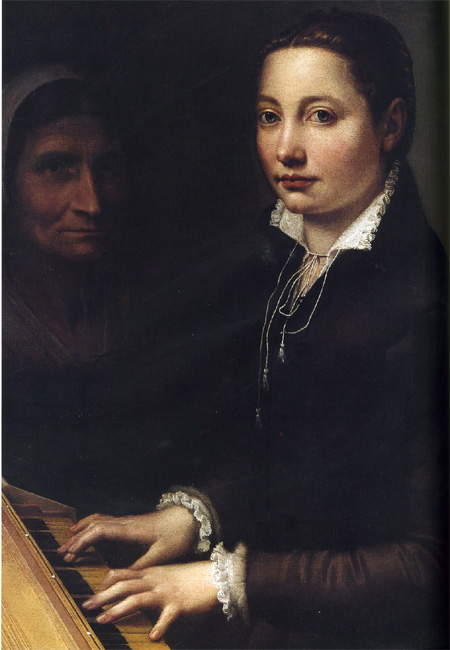During the Middle Ages in Europe, women were put in a situation that didn't allow them to be superior to men. Instead, women were not equally educated, weak, and restrained to work in for positions that men took. In so, women were restricted to the home and depended on either husbands, brothers or fathers, for financial help. (Chadwick, 44) Women social roles where circumscribed by the Christian ethic. Therefore they were taught to be obedient to their husband while taking care of the family and house. Many women weren't educated at the time, but only a few that were noble had access to knowledge. Those who grew up poor had to start working quickly to help support families. The most prominent upset was that women were getting paid less than men to complete the same jobs. Only the women of the church were able to learn the most. With the use of religion, it allowed nuns to seek knowledge and understanding that is non-accessible to peasants. These women were sent to convents to learn, while other women had to stay home and demanded to fill in the domesticating roles. These were roles where examples such as cleaning, cooking, and watching family health.
During the Renaissance, women were subjected as sexual/pleasurable beings to view. The male artist would use naked women with beautiful qualities to sexualize women as objects. Women were not viewed for what they did but instead looked at for how they appeared. Also known as the "Male Gaze." It was hard for women to have an impact on what it was like to be treated unequally. "The history of women's contribution to visual culture does not necessarily fit neatly into categories produced by men."(Chadwick, 87) At the time must women felt better of "to be in silence."(Guerilla Girls, 19) Finally, a woman by the name of Elisabetta Sirani was able to prove virtue with individual acts of bravery. Her paintings were rich of colors and showed her "confidence in brushwork" which displayed her reputation in Bologna as a "phenomenon."(Chadwick, 104) Her death was accompanied by a large funeral that'll inspire many artists to keep painting. Sirani was noble for not only her great paintings but bravery that would soon open a bridge for other female artists to step forward.
 |
| Elisabetta Sirani Portia Wounding Her Thigh 1664 |
Artist such Artemisia Gentileschi was able to paint portraits that switched gender roles within their paintings. For example in the painting "Judith with Her Maidservant," Artemisia was able to set the focus of the painting on the two women killing the king. In the painting, we hardly see the beheaded man. Also, the women are looking to the same side after chopping off a man's head. This sends a powerful message that shows the female physical power. Unlike other paintings of the time, the men who are part of the painting is hardly viewed or noticed when you first glance upon the painting. The lighting is shined on the women to show what they've done. Women did not want to be seen as object anymore but recognized for what they did.
 |
| Artemisia Gentileschi Judith with Her Maidservant c. 1618 |
Another painting that showed female power was Sofonisba Anguissola "Self-Portrait." This painting was relevant because it showed women playing the piano rather than just her being painted for looks. The piano playing showed intelligence and skill. Unlike other paintings that males did, Sofonisba was able to explain more meaning then looks in paintings including females effectively. Women did not want to be seen as objects anymore but rather as portraying the struggles they faced. Moreover, we now get paintings that demonstrate what it was like to be overly dominated by men. The image of women being belittled by men inspired other to stand up and paint similar paintings that portrayed women as independent and dominate rather than dependent and weak.
 |
| Sofonisba Anguissola Self- Portrait 1561 |
It wasn't until the nineteenth century in which women were given a chance to defend themselves and become more intellectual. Women rights occurred into the Nineteenth Century. However, the women just beginning to make progress. Women were still obedient to husband and shared same roles in households from the middle ages. The Renaissance furthered in the diversity of the artistic world. One thing that most women were allowed to do at the time was painting/craft. Some women were able to receive recognition for the artwork they were doing. In so, women were heavily influenced and began to create their pieces that would soon demonstrate the struggle in which women partook. Some would sell their dearest painting to make money. However, a new passion came when the camera was created. Photography was yet to be gendered, but women took the initiative and began taking pictures to demonstrate art and symbolism. Photography became an excellent source for female work. Most painters and intellects at the time filled with men, while women painters had lots of trouble in securing a spot as a well-known artist. Thus photography opened up a new genre of art that made it easier for women to contribute.
Work Cited
Chadwick, Whitney. Women, Art and Society. Thames and Hudson, 2015.
The Guerrilla Girls' Bedside Companion to the History of Western Art. Penguin
No comments:
Post a Comment
Note: Only a member of this blog may post a comment.